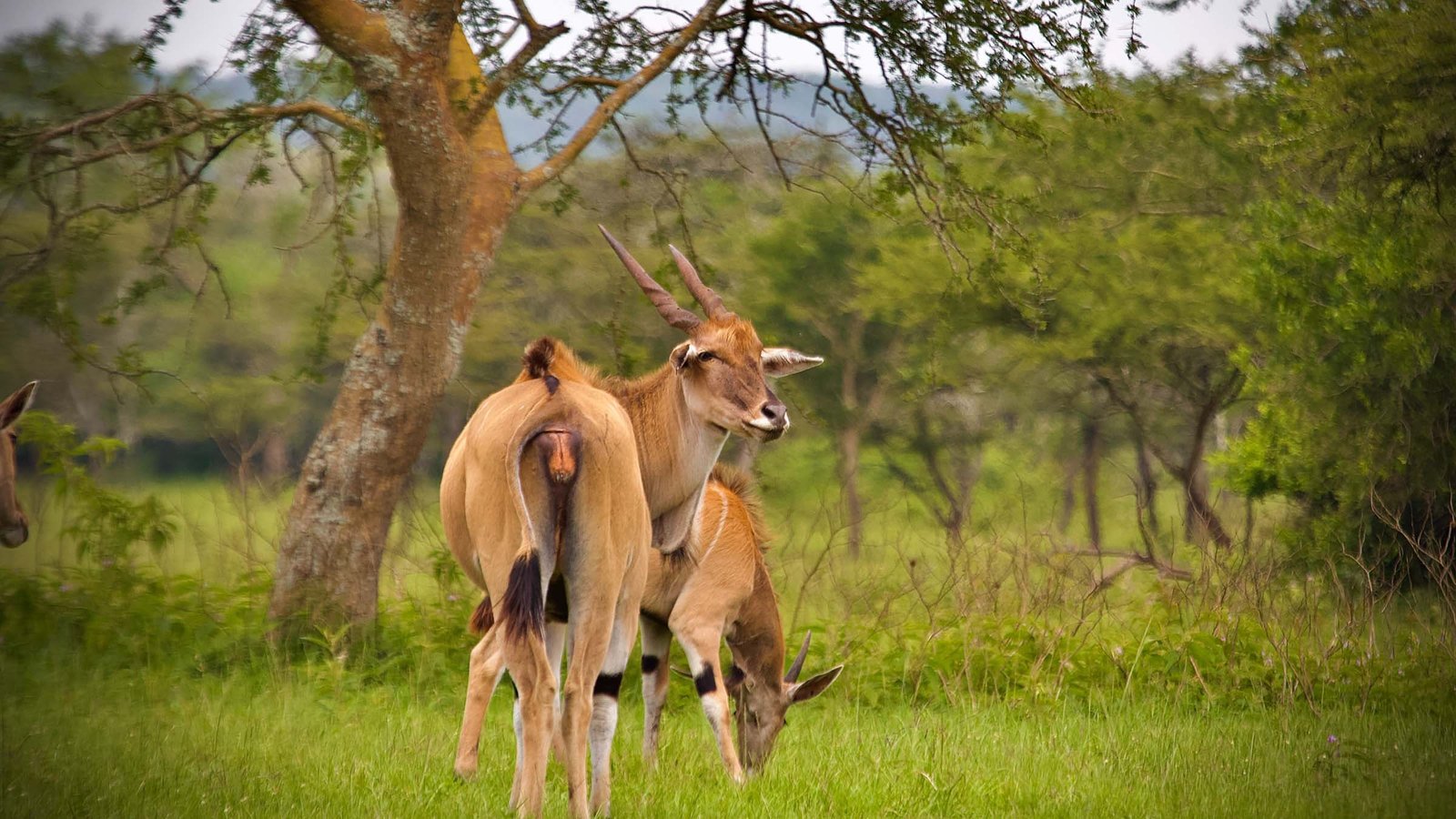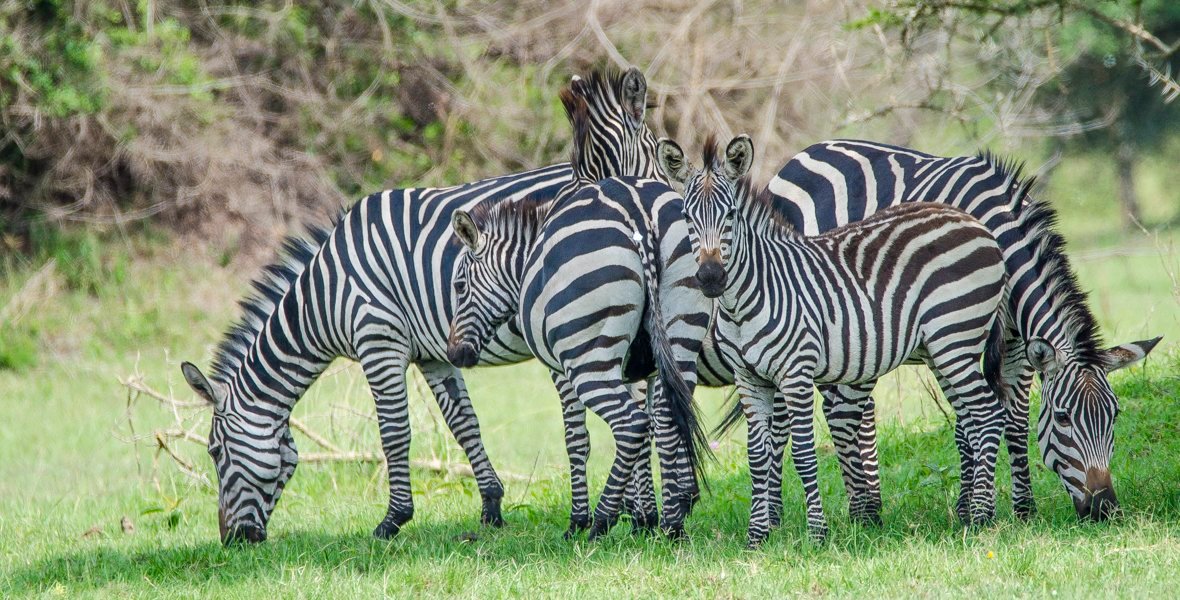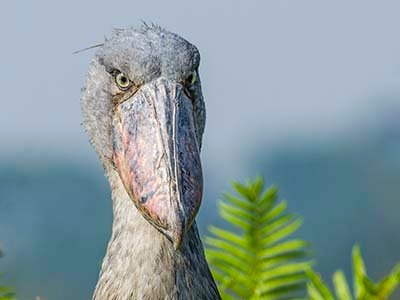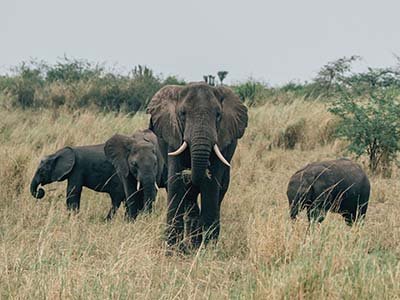One of Uganda’s most magnificent and breath-taking wildlife parks, Lake Mburo National Park, is located in the midst of a vast, dense acacia woodland.
The area was set aside in 1933 as a controlled hunting area, and upgraded to a game reserve in 1963.
The limits of Lake Mburo’s original reserve were also established when the government gazetted the area as a national park in 1983. In 1984, the park was eventually made public.
A variety of ecosystems, including arid slopes, rocky outcrops, bushy thickets, open and forested savannas, woodland, and wetlands including lakes and swamps, make up the unique landscape of Lake Mburo. A diverse range of animals is supported by its sculptured topography, undulating hills and picturesque lake coastlines, riparian woodland, seasonal and permanent marshes, and grassy valleys in a tropical environment. The park sits on an ancient Precambrian metamorphic rock which dates back to 500 million years ago.
In comparison to many other East African parks, Lake Mburo National Park is modest (370 sq km), yet it is home to a startling variety of flora and animals, including some mammal and bird species that are unique to Uganda. An astonishing array of animals, including 68 mammal species, is supported by these diverse ecosystems.
The only park in Uganda that safeguards Impalas, as well as the only one in the area containing Grants Zebras and Eland. Only the Lake Mburo and
Queen Elizabeth National Parks, as well as the Pian-upe Wildlife Reserve, include Topi in Uganda. A variety of animals include Warthogs, waterbucks, buffalos, reedbucks Oribi, Defassa, and elands are examples of common mammal species. Despite being very rare this area, the Roan antelope has also been spotted.
Lions (just one male is sometimes seen during night game drives) have also returned to the park after years of poaching and being on the verge of extinction. Leopards and hyenas are also there.
The region’s five lakes are home to hippos and crocodiles, while nearby wetlands are home to elusive papyrus specialists like the sitatunga and papyrus gonalek.
Water birds including the spectacular African finfoot, pied kingfisher, Malachite Kingfisher and African fisheagle, Shoebill, Papyrus Yellow warbler, African wattled plover, Saddle billed stork, Tabora cisticola, Brown Carrutter’s cisticola, Abyssinian ground hornbill, Great snipe, and white winged warbler are just a few of the outstanding bird species found in the park’s 332 species list. Particularly well-represented are the uncommon Black-collared Barbet and Red-faced Barbet among the bird species of the acacia forest.
HOW TO GET TO LAKE MBURO NATIONAL PARK
Lake Mburo National Park is located in south western Uganda between the towns of Masaka and Mbarara. It is a three hours drive (228kms) from Kampala. Two gates enter the park; from Kampala past Lyantonde to the Nshara gate is 13kms, while the junction for Sanga gate is located at Sanga trading centre, 27kms past Lyantonde. Both junctions have clear signposts.
The park is conveniently located close to the western high way that connects Kampala to the parks of western Uganda. It is also the closest park to the capital city Kampala and offers a refreshing stop over when travelling to or from the western parks and reserves.
CLIMATE AND WEATHER
Lake Mburo National Park lies in a rain shadow between Lake Victoria and the Rwenzori Mountains and receives an average of 800 mm of rain a year. Being near the equator, the rainfall pattern is bimodal, with the long rains occurring from February to June, and the short rains from September to December. The rains are rather erratic and unpredictable, but most rain tends to fall in April and November. The average recorded temperature is 27.5°C with daily variations ranging from 21.5°C to 34.0°C. July and August are the hottest months. The park lies between, 1,219metres and 1,828 metres above sea level between rolling hills and open grass valleys.
BEST TIME TO VISIT FOR A WILDLIFE SAFARI
The best time to visit Lake Mburo National Park for a wildlife safari is during the long dry season, and for the region this is from June to September. During this time, the grass is shorter and animals are more easily visible as they congregate around the various water holes, Salt licks and lakes. These conditions are also perfect for photography
For birdwatching anytime of the year is ideal, however the migrants are usually common from June to March.
If your interest are specific your Safari tour operator is able to arrange a customised itinerary.
ACCOMMODATION FACILITIES
Visitors may stay in a variety of affordable accommodations in the park thanks to the Uganda Wildlife Authority (UWA). The Buffalo tented camp offers permanent luxury tented campers as well as the UWA rest camp tents, and a lovely camp site is located on the lake’s coast.
Arcadia Cottages, 1 km to the south, and for those who prefer Safari tents,
Mantana Tented Camp, 3.5 km to the north of Rwonyo, provide upscale lodging options. Within the park, the recently constructed
Kigambira Safari Lodge is also conveniently located.
A number of facilities are now available around the park in addition to
Mihingo Lodge, which is located on a rocky Kopje just beyond the park’s eastern border, there is leopard Camp and Rwakobo
MAJOR ATTRACTIONS OF LAKE MBURO NATIONAL PARK
Rwonyo Rest Camp
Rwonyo Rest Camp is a beautiful and peaceful retreat managed by the Uganda Wildlife Authority. For various activities, including boat rides and birdwatching, this is usually the starting point. Payments for the activities are made here, and tourists are assigned guides.
The location also has budget accommodation facilities and a curio shop stocked with various traditionally made items.
Lake Mburo
The eastern shores of Lake Mburo National Park can also be explored by boat, departing from a jetty at the Lakeside campsite near Rwonyo. Watch out for crocodiles and hippopotamuses during the two hour voyage. You can also sight a variety of birds including Pelicans, Heron, the Cormorant fish eagle and perhaps the rare African Finfoot and Shoebill storks. Fishermen with their own equipment may fish in the Lake from the campsite by arrangement.
Salt licks
Guided walks explore the park around Rwonyo, culminating in a visit to a natural salt lick frequented by the wildlife. Viewing is facilitated by a timber observation plat form.
Game tracks
The eastern hinterland of Lake Mburo is served by a network of game tracks along which a variety of savannah animals and birds can be sighted. Impalas are the most commonly seen along the Impala track while Zebras frequent the grassy valley floors traversed by the Zebra track. This connects to the Ruroko track which passes rock kopjes, home to the elusive Klip Springer.
In the south of the park, the lakeside track passes through dense woodland that is home to bushbuck and bush duiker, to Kigarama hill which provides a panoramic view of Lake Mburo. This lake and seven more can also be seen from the Kazuma lookout, close to Kazuma track.
Rubanga forest
Though small, this tract of forest on the western part of the park also provides a taste of the tropical high forest with closed canopy and is home to a variety of forest bird species. Rubanga can be explored with a ranger guide.
Conservation education centre
The park has a Conservation Education Center, 1km west of Sanga gate. This provides accommodation and an education hall for school groups, visitors, seminars and workshops.
TOURISM ACTIVITIES IN LAKE MBURO NATIONAL PARK
There are several breathtaking activities at Lake Mburo National Park including nature walks, bird watching, boat cruises and game drives. Nature walks are conducted on foot with the help of an armed guide. Game drives are done in the visitors own vehicle. During the boat ride, visitors get a chance to see a variety of lake wildlife like crocodiles and hippos. Birds like African fish eagle, fin foot and water cormorants can also be sighted along the shores.
HORSE RIDING IN LAKE MBURO NATIONAL PARK
Horse riding is conducted by Mihingo Lodge inside the park while quad bike riding gives one a spectacular view of the park’s terrain and wildlife.
Walking Safaris
The bush paths of this little but wonderful national park may be explored in a unique manner by going on a nature walk in Lake Mburo. When on a walking safari, you may take in little details that are often missed when travelling by vehicle, horseback, or bicycle.
You may have a special chance to enjoy nature by going for nature walks in Lake Mburo National Park. In Lake Mburo National Park, you must go on a walking safari with a guide from the Uganda Wildlife Authority who is armed. This is to protect yourself from animal attacks.
The optimum time to go on a walk within Lake Mburo National Park is in the morning. While on the park’s bushwalks, you’re likely to see antelopes like elands, impalas, and bushbucks grazing or drinking from the swamps, as well as buffaloes and the recently introduced giraffes (translocated from Murchison Falls National Park in 2015). Butterfly sightings, sightings of tiny insects, reptile and amphibian sightings, and sightings of smaller creatures like the adorable dwarf mongoose or the uncommon sitatunga are also possible.
The cost of taking a guided nature walk or walking safari within Lake Mburo National Park is $15 per person for foreign non-residents, $10 per person for foreign residents, and UGX10,000 per person for East Africans, according to the UWA rate card for 2022–24.
The aforementioned costs include the services of a UWA walking guide but do not cover park entrance fees or any other activities the traveller may choose to partake in.
Cycling Safaris
The park provides tourists with a selection of cycling safaris that let them see the area’s different landscapes and animals in a fresh and engaging manner. Cycling safaris are organised for Lake Mburo National Park by a number of tour operators in addition to the UWA.
Leopard Rest Camp which is close to the park offers two cycling safari packages: outside the park for US$ 25 and within the park for US$ 55, excluding park entrance costs.
Visitors may bike through savannah grasslands and forests while pausing to see wildlife along the route. Among the creatures they may see are zebras, impalas, giraffes, leopards, buffalo, and elands.
Guided cycling safaris are available through the UWA for $30 for non-resident foreigners, $25 for foreign residents, and UGX 30,000 for East Africans; park admission costs are not included in any of the prices.
Night Game Drives
Night game drives are a unique way to explore wildlife in this park. You will be able to see some animals that do not venture out during the day; these nocturnal animals usually come out at different times of the night depending on their feeding behavior. These drives take place after sunset.
Bush babies, porcupines, aardvarks, and hares are always active at night. Hyenas, leopards, and lions take advantage of this to hunt them. Birds include owls and nightjars. These animals are more active at night, making it the perfect time to see them.
The drives are usually guided by experienced and knowledgeable park rangers who will provide information about the animals and the park’s ecosystem.
The night game drives are carried out in custom safari vehicles, powerful torches or flashlights are required, which allows for excellent viewing opportunities.
It’s important to note that the night game drives are not always available, and it’s best to check with the park management for availability before planning a trip.
LOCAL PEOPLE
Even if there aren’t many people living there, the population density and level of agriculture rise toward the southern edge of the park.
With Bairu cultivators and Bahima herders making up more than two thirds of the entire population on the rangeland outside the park, the Banyankole continue to be the area’s predominant ethnic group.
Other groups, such as Baganda peasants, Bakooki, Bakiga, and Banyarwanda immigrants from south-western Uganda and Rwanda, make up the remaining population.
UGANDA WILDLIFE AUTHORITY TARIFFS
For information on park entrance and activity fees, please refer to the UWA tariff sheet. Twenty percent of all park entrance fees are shared with communities living in the park boundary in order to spread the benefits of eco-tourism and generate local support for conservation.








